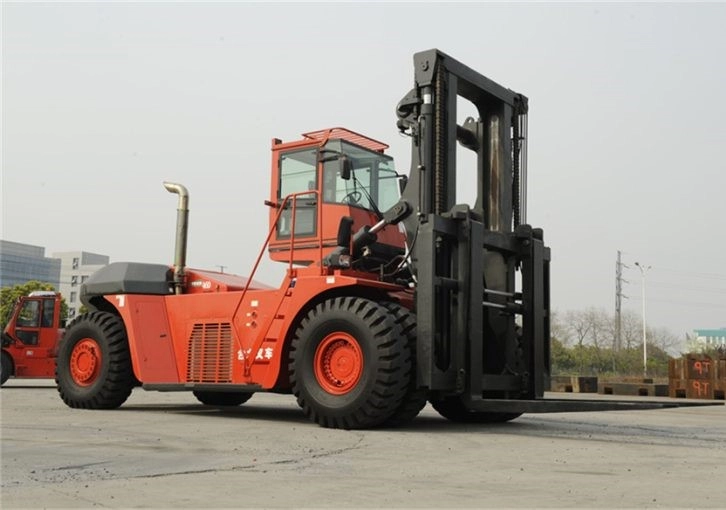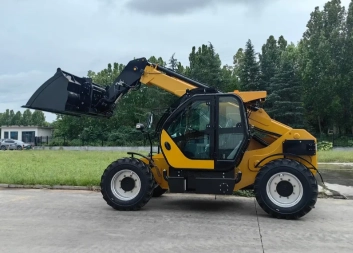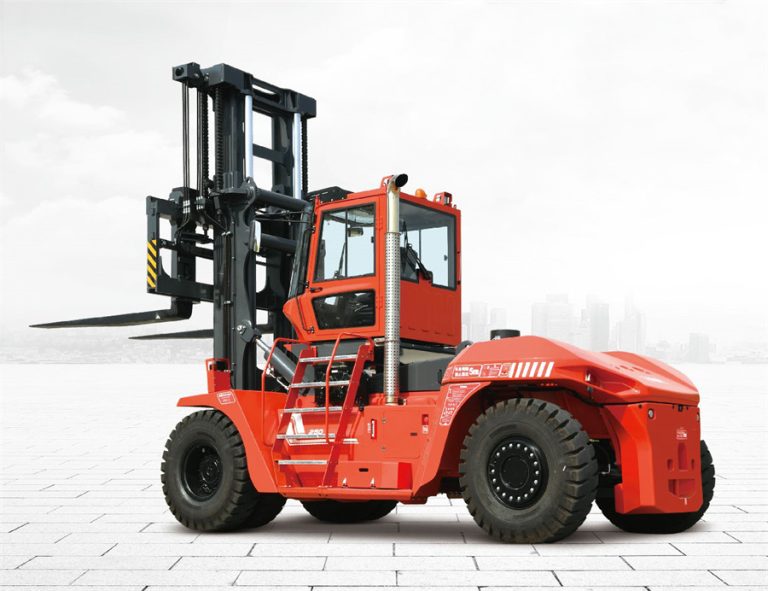Ever seen a busy shipyard where huge containers move like chess pieces? That’s often thanks to a diesel forklift, a tough workhorse in heavy-duty material handling. If you’re in construction, logistics, or any outdoor job with big loads, this guide is for you. We’ll walk through the basics to expert tips on using the diesel forklift. Think of it as your handy map to get the best from these strong machines. Whether you’re a beginner operator or a manager planning an upgrade, stay with us. We’ll share real-life stories and practical advice to keep it engaging.
What Is a Diesel Forklift, Anyway?
Let’s keep it simple. A diesel forklift runs on a diesel engine, similar to a truck or tractor. Unlike electric versions that need recharging, these rugged units fill up with diesel and keep going in tough spots. They’re built solid, with engines that deliver plenty of torque for lifting heavy weights.
Imagine a rainy construction site. An electric forklift might stall or get damaged, but a diesel one pushes through the mud, hauling brick pallets with a steady rumble. Sizes range from small 1.5-ton models for tight spaces to massive 30-ton giants for ports. The big perk? They shine outdoors where power and stamina rule. Sure, fuel costs add up, but for nonstop work, it’s a smart trade.
Why Choose a Diesel Forklift?
What makes diesel forklifts stand out? It’s not just talk—these machines excel in hard conditions. Their high power and torque handle loads over 5 tons with ease. Picture a 4-ton unit in a shipping yard lifting crates smoothly, even on rocky ground.
They also run long hours on one tank, perfect for back-to-back shifts. Refueling is fast, like a quick pit stop, beating the wait for battery charges. Durability is key—they tackle dust, harsh weather, and bumpy surfaces like pros. I once heard a miner say his diesel forklift survived a wild dust storm that stopped everything else.
Money-wise, they make sense for heavy jobs. Fuel costs more upfront than electric, but in outdoor ops needing constant power, they save time. Plus, their lift strength beats electric or gas models. Check this quick rundown:
| Benefit | What It Means | Best For |
|---|---|---|
| High Torque | Smooth moves on rough ground | Outdoor lumber yards |
| Long Runtime | Runs hours without breaks | Busy warehouse shifts |
| Tough Build | Handles bad weather and dust | Construction, mining |
| Strong Lift | Lifts up to 30+ tons | Heavy industrial tasks |
They’re not flawless—emissions are a concern, but newer models cut that with cleaner tech.
Picking the Perfect Diesel Forklift
Not every diesel forklift fits every job. It depends on your load and location. Start with capacity. For lighter tasks, like stacking pallets in a medium warehouse, a 1.5- to 3.5-ton model does the trick. These are easy to maneuver, lifting 1.5 tons without fuss.
For bigger challenges, like factory work, go with 4-5 ton units. They pack strong engines and comfy cabs with adjustable seats and good views to ease long hours. Need 5-10 tons? G series models step up, hauling steel coils or gear with turbocharged engines for better fuel use.
For the heaviest lifts, 15-30 ton versions dominate ports and steel mills. A 20-25 ton forklift shifts containers like a breeze, thanks to smart hydraulics. A logistics friend told me his 25-ton unit turned a messy dock into a smooth operation, shaving hours off daily work.
Think about terrain too. Air-filled tires work for bumpy outdoor spots; solid ones hold up in puncture-prone areas. Attachments like clamps for coils or spreaders for containers can help. Check your space—a tight turn radius makes a big difference.
How to Operate a Diesel Forklift Safely

Running one isn’t tricky, but skipping steps invites trouble. First, check it out: Look at tires, fluids, and brakes. Add fuel if low—diesel fills up fast, but empty tanks slow you down.
Hop in, buckle up, and start the engine. Let it warm up a bit, especially in cold weather, to avoid wear. Controls are simple: Steering wheel, gas and brake pedals, levers for lift and tilt.
To grab a load: Approach straight, keep forks level and wide. Slide them under the pallet slowly—rushing risks a tip. Lift it just off the ground, tilt back a little for balance. Drive steady; speed limits are there for safety.
Unloading? Reverse it—lower, tilt forward, pull out. Park on flat ground, drop forks fully, and turn off. Tip: On wet yards, go easy on the gas to avoid slips. One newbie learned that after a small skid—lesson learned!
Practice in open areas first. Get certified if you’re new; it’s not just rules, it saves lives.
Keeping It Running Smooth
Ignore maintenance, and your forklift becomes a headache. Daily checks: Fluid levels, tire pressure, clean air filters—dust is a killer. Weekly: Grease fittings, look for hose leaks.
Change oil every 200-500 hours, sooner in dusty mines. Batteries need care too, even for starting. Clean terminals to stop rust.
For bigger fixes, call in pros. Swap worn tires quick; bald ones slide like skates. Watch fuel use—if it drops, check the injectors. A well-kept machine lasts years, saving cash. A warehouse boss said regular care kept his 7-year-old 5-ton unit going strong, dodging costly new buys.
Staying Safe with Diesel Forklifts
Safety isn’t optional—it’s everything. Wear gear: Hard hat, vest, steel-toe boots. Stick to load limits; overloading causes tips.
See clearly—use horns at turns, mirrors for blind spots. In crowded sites, have a spotter. Avoid slopes with loads; gravity always wins.
Ventilate indoors for emissions, though diesels shine outside. New safety features like anti-tip systems and cameras add protection. Train everyone—accidents drop when folks know the ropes.
Quick dos and don’ts:
- Do: Keep paths clear, signal turns.
- Don’t: Lift loads high while moving, ignore alerts.
Stay sharp; a quick mistake can cost a lot.
Diesel Forklifts in Real Life
Think of a busy construction site. A 4.5-ton diesel forklift hauls rebar bundles over uneven dirt, its torque handling hills with ease. Or in a lumber yard, a 10-ton G series unit stacks logs neatly, thanks to hydraulic control.
In ports, 25-30 ton models move containers fast, cutting wait times. These aren’t guesses—they happen daily, boosting output. A shipping company switched to diesel and trimmed delays by 30%, as refueling took minutes, not hours.
Even in mines, they fight off dust, proving their worth. It’s all about matching the machine to the task.
Meet JinChengYu FORKLIFT: Your Trusted Diesel Forklift Supplier
Based in Qingdao, Shandong Province, JinChengYu FORKLIFT shines as a top name in material handling. With easy access by land, sea, air, and rail, they manage imports, exports, and sales networks smoothly. Their range covers diesel forklifts from 1-48 tons, plus side loaders and rough terrain options. Focused on quality, they offer sales, support, rentals, and parts worldwide. Their push for innovative, eco-friendly designs builds trust. If you need solid diesel equipment, they’re a great choice.
Wrapping Up
Using a diesel forklift comes down to power, reliability, and careful handling. From picking the right one to daily care and safety, this guide gives you the tools to work smarter. These machines aren’t just gear—they transform tough jobs. Ready to try? Jump in, stay safe, and watch your work improve.
FAQs
Why does a complete guide to using the diesel forklift help new operators?
A complete guide simplifies the basics, safety, and upkeep, helping beginners avoid mistakes like overloading. It builds confidence fast.
How does ground type affect using the diesel forklift outside?
Rough or uneven ground needs models with strong torque and air-filled tires for grip. On muddy lots, ease off the gas to stay steady.
Can you use the diesel forklift inside, and what to watch for?
Yes, but ventilate well due to fumes. Use models with filters, and limit time indoors—they’re built for outside work.
What keeps fuel use low when using the diesel forklift?
Regular tune-ups, clean filters, and steady driving help. One site cut fuel by 15% just by training drivers to save energy.
How do lift limits shape choices in a complete guide to using the diesel forklift?
Lift limits decide the model and safety needs. For 10-ton loads, pick a sturdy unit with balance features to avoid risks.










